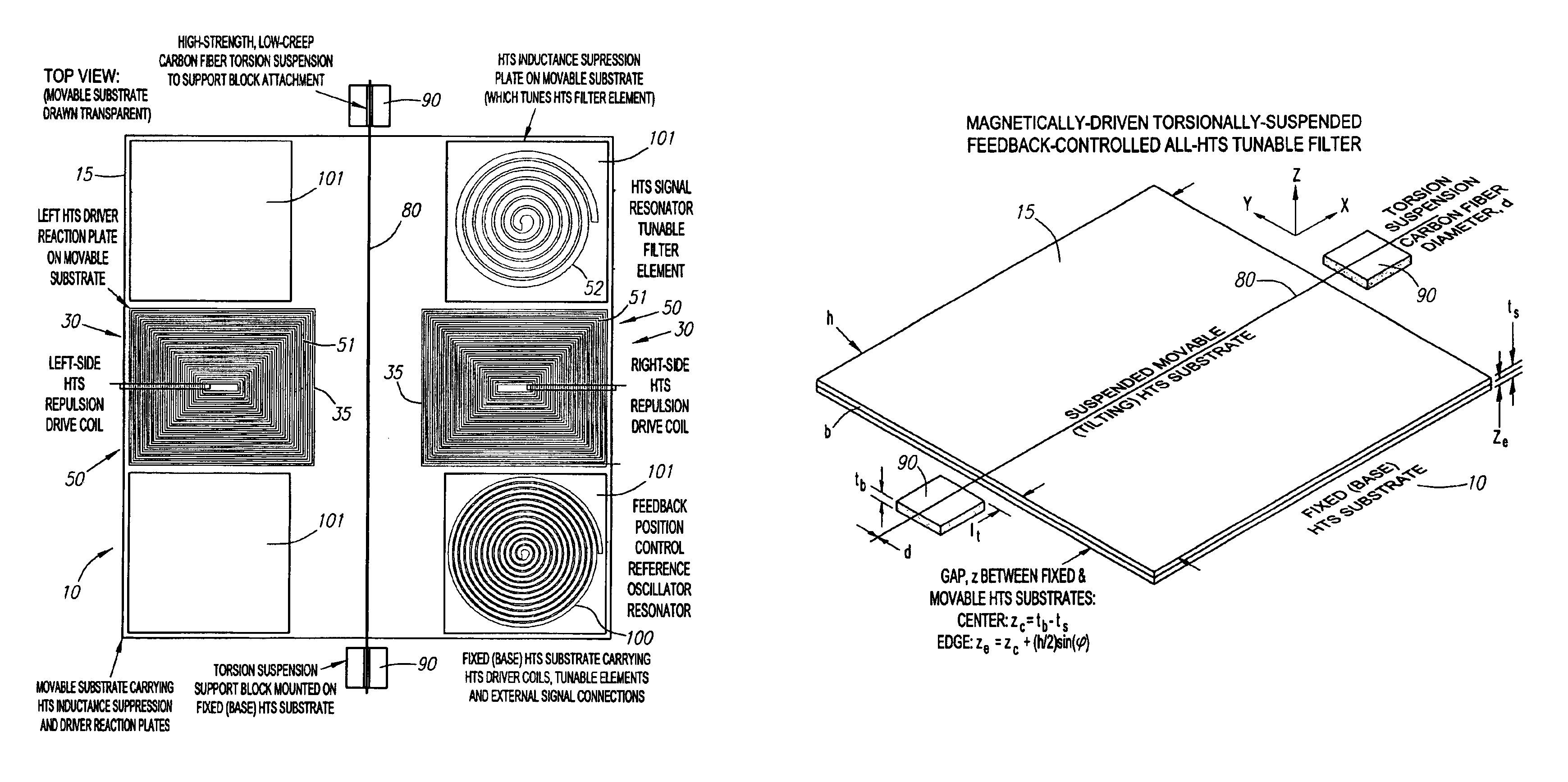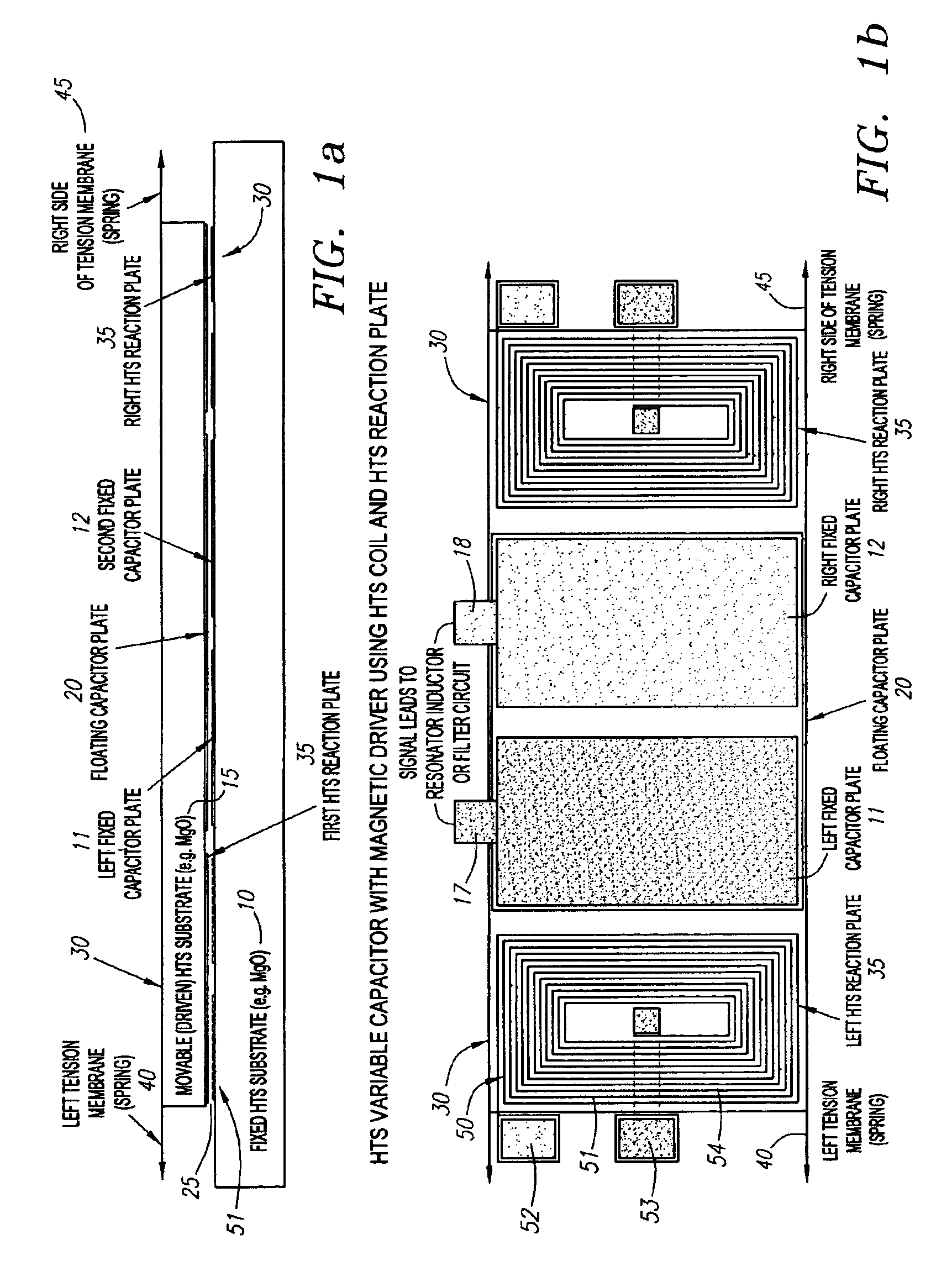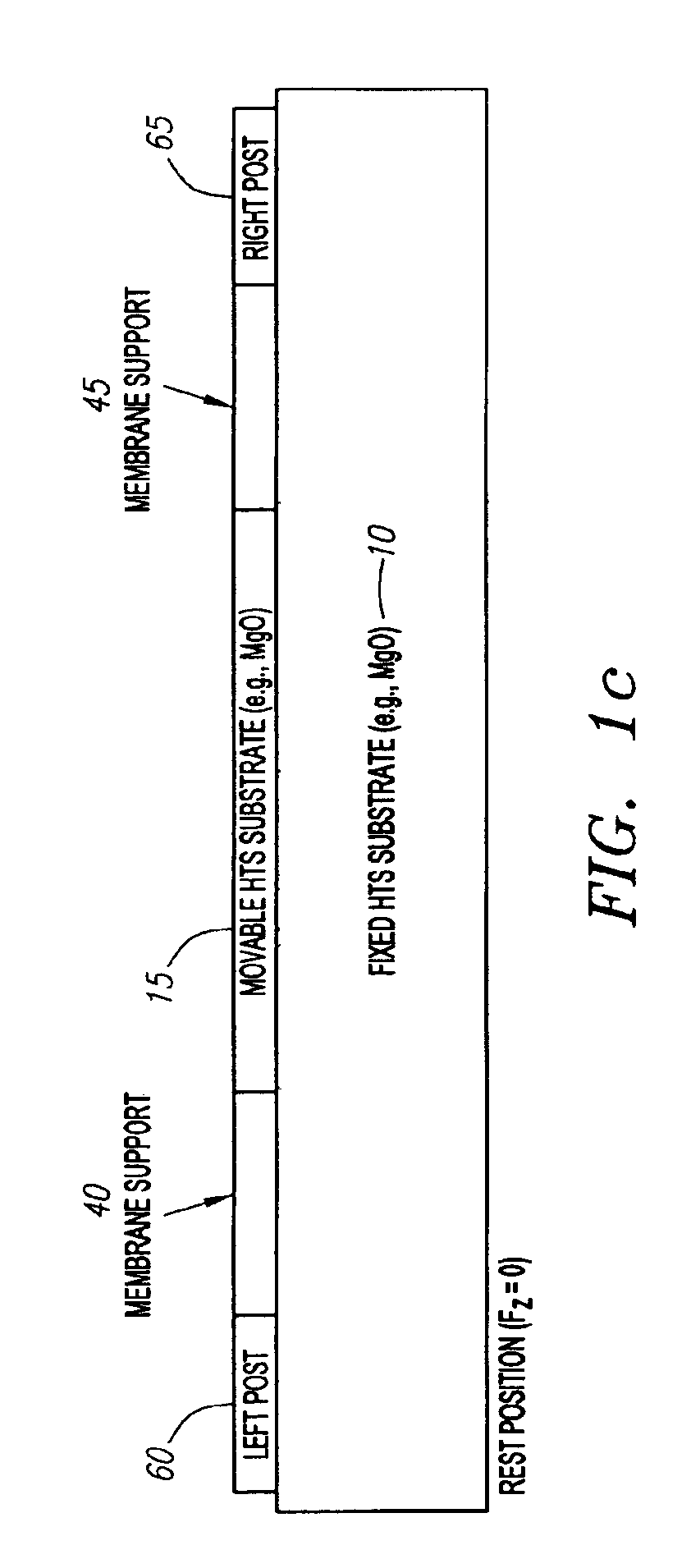High temperature superconductor tunable filter having a movable substrate controlled by a magnetic actuator
a superconductor and actuator technology, applied in the field of hts filters, can solve the problems of corresponding compromise in filter steepness or selectivity, limited dynamic range, undesirable intermodulation products, etc., and achieves large tuning range, low friction and backlash (hysteresis).
- Summary
- Abstract
- Description
- Claims
- Application Information
AI Technical Summary
Benefits of technology
Problems solved by technology
Method used
Image
Examples
Embodiment Construction
The present invention provides a magnetic actuator for varying the electrical characteristics of variable capacitors or inductors. The magnetic actuator of the present invention has a dramatically greater tuning range than the electrostatic drivers of conventional prior art MEMS variable capacitors. Turning now to FIGS. 1a through 1c, a variable parallel split-plate capacitor tuned by a pair of magnetic actuators with a movable substrate 15 having a membrane-suspended vertical translational geometry is illustrated. The variable capacitor comprises a fixed substrate 10 (illustrated in FIGS. 1a and 1c) suitable for carrying an HTS layer. Suitable materials for the fixed substrate 10 include MgO. On the upper surface of the fixed substrate 10, a first fixed capacitor plate 11 and a second fixed capacitor plate 12 are formed using thin-film HTS material. Such epitaxial superconductive thin films are now routinely formed and commercially available. See, e.g., R. B. Hammond, et al., “Epit...
PUM
| Property | Measurement | Unit |
|---|---|---|
| repulsive force | aaaaa | aaaaa |
| thickness | aaaaa | aaaaa |
| temperature superconductor | aaaaa | aaaaa |
Abstract
Description
Claims
Application Information
 Login to View More
Login to View More - R&D
- Intellectual Property
- Life Sciences
- Materials
- Tech Scout
- Unparalleled Data Quality
- Higher Quality Content
- 60% Fewer Hallucinations
Browse by: Latest US Patents, China's latest patents, Technical Efficacy Thesaurus, Application Domain, Technology Topic, Popular Technical Reports.
© 2025 PatSnap. All rights reserved.Legal|Privacy policy|Modern Slavery Act Transparency Statement|Sitemap|About US| Contact US: help@patsnap.com



